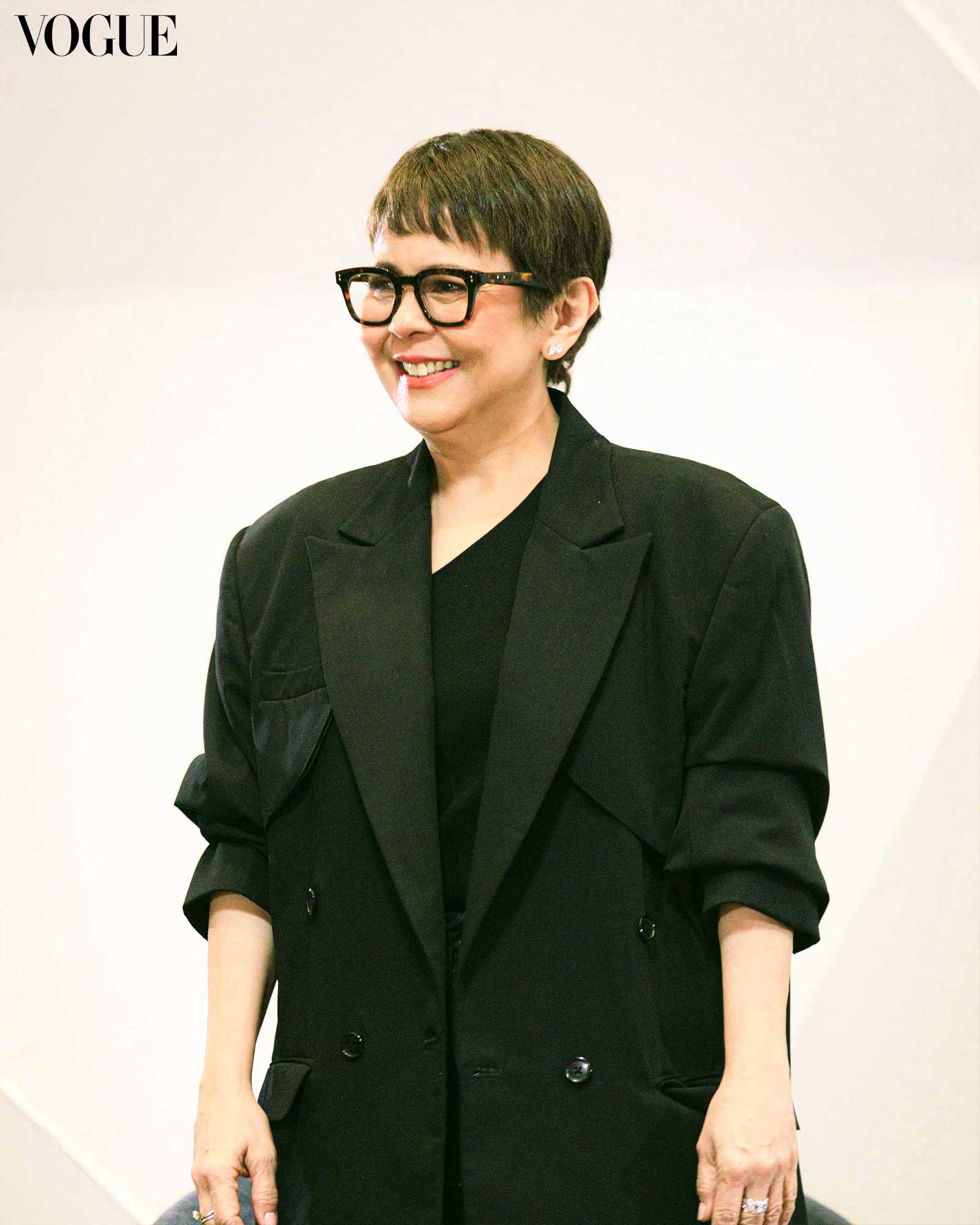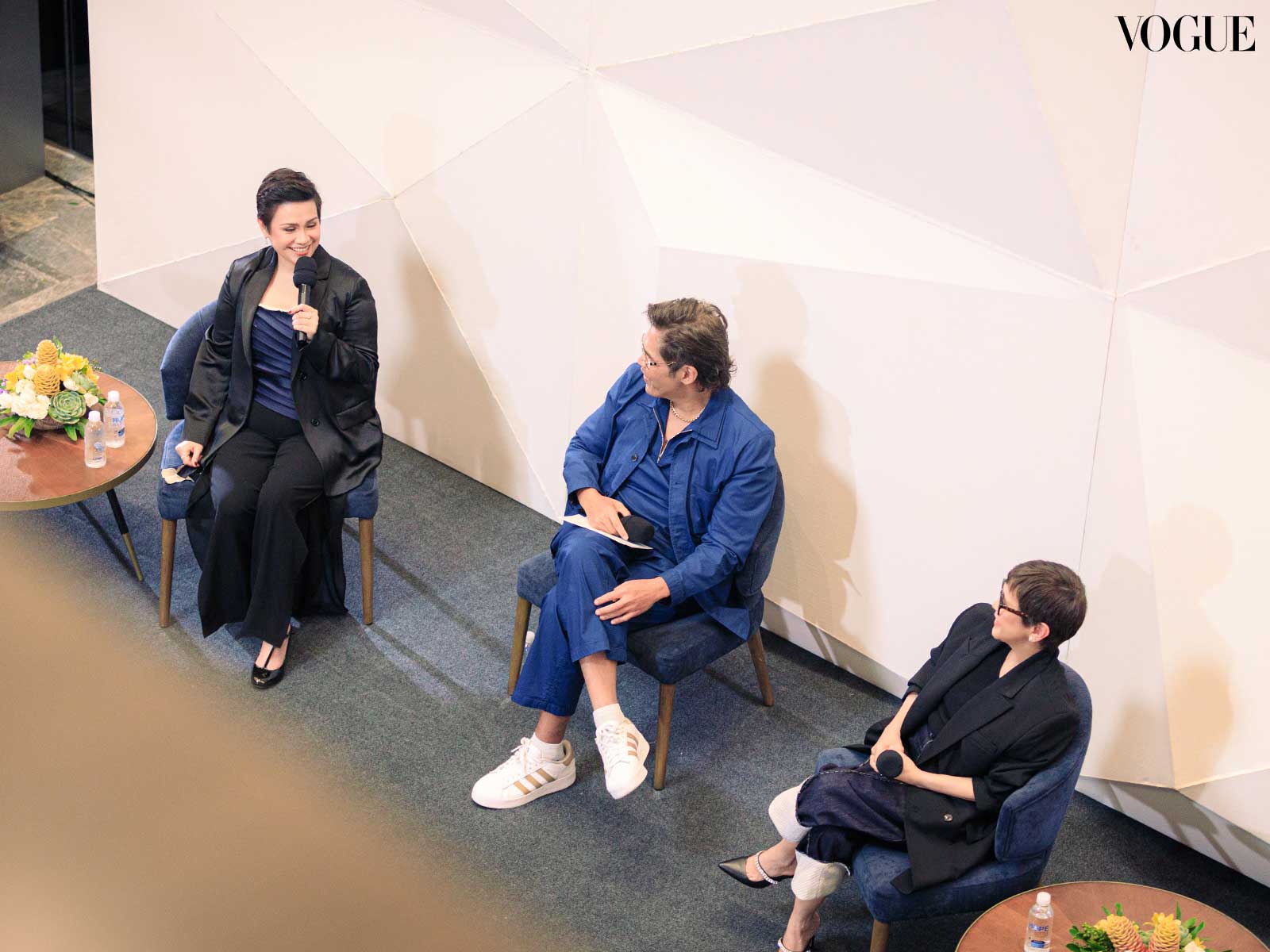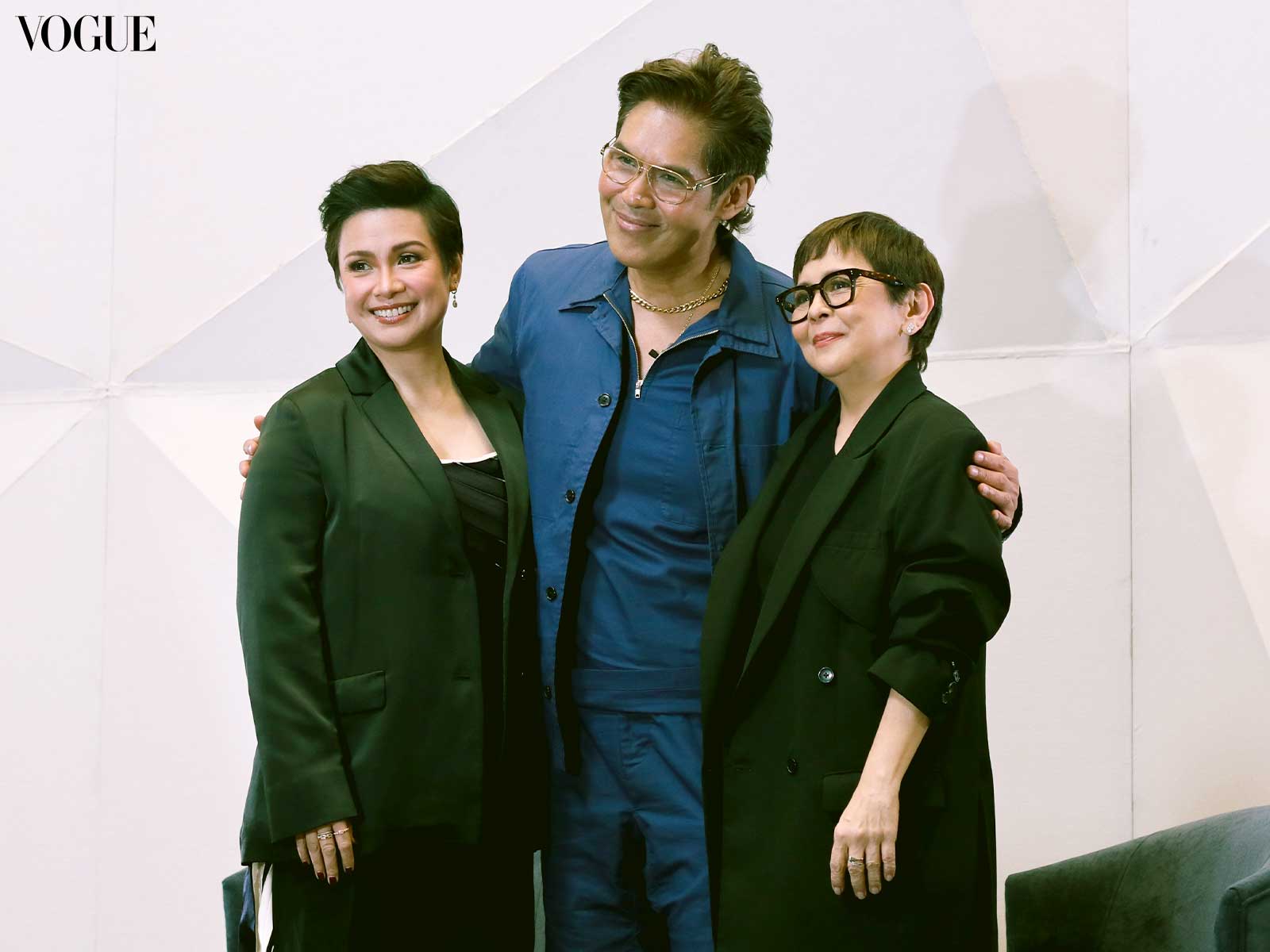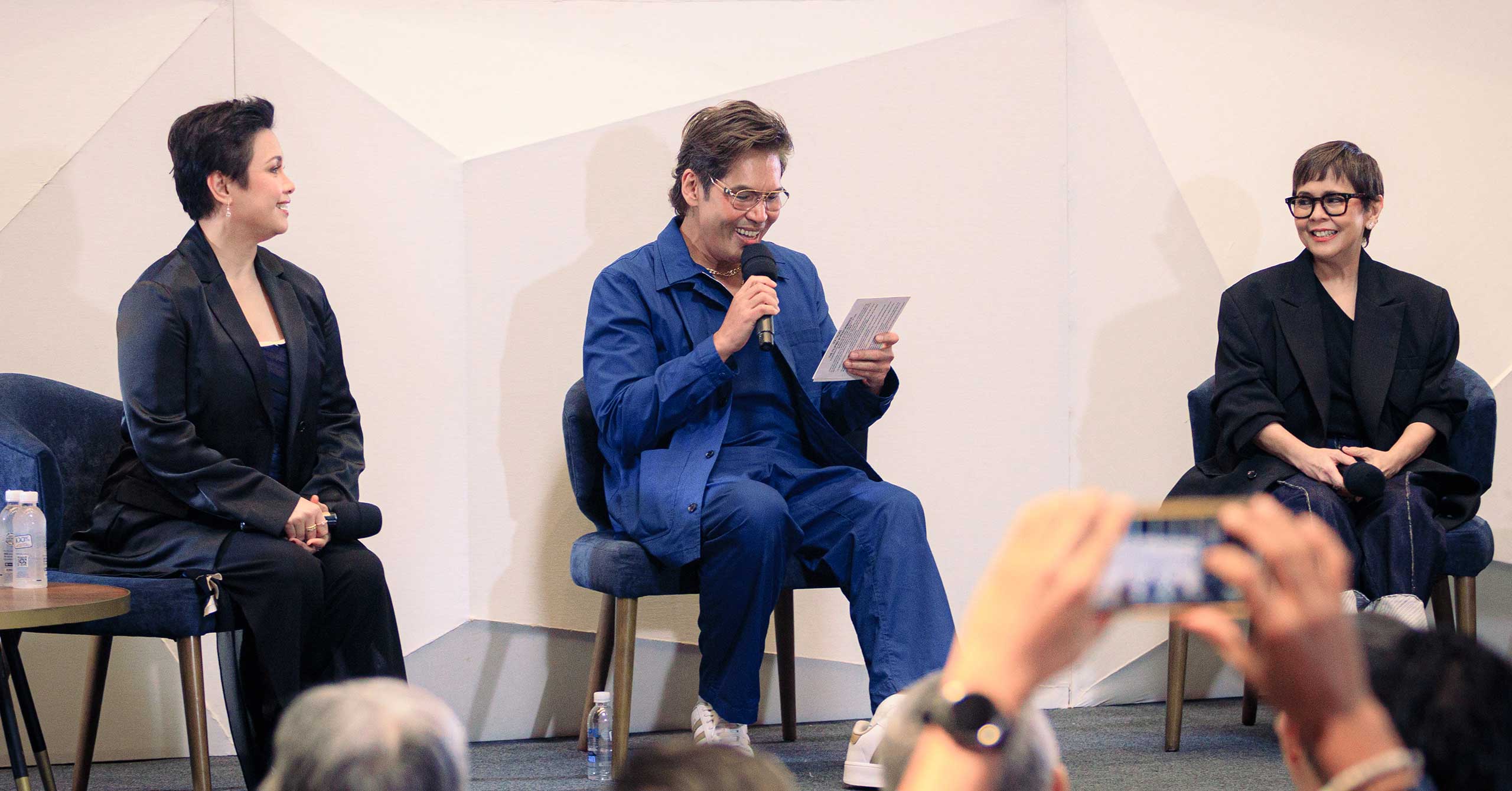Lea Salonga and Dolly de Leon host ‘Conversations in Spotlight,’ moderated by Clint Ramos. Photo by Excel Panlaque
Photo by Excel Panlaque
Conversations in Spotlight, presented by State of the Arts with support from Ayala Land and Make It Makati, featured a dialogue with two of the Philippines’ most celebrated actresses: Lea Salonga and Dolly de Leon.
To Lea Salonga and Dolly de Leon, the theater stage will always be home.
Two months ahead of the highly anticipated opening of Request Sa Radyo, students, actors, filmmakers, and various theater enthusiasts gathered at the JZA Hall of the Samsung Performing Arts Theater for an evening of insightful discussions. Moderated by producer and Tony Award-winning designer Clint Ramos, the two actresses explored the craft of acting through their lens, their individual perspectives on the evolving theater industry, and the emotional depth of their upcoming project.
Both celebrated figures in the theater world, the two actresses shared insights into their early careers. Salonga started in theater at seven years old, but claims the “theater bug” didn’t bite her until later in her journey. “At the time, I didn’t have the ambition of wanting to be on theater,” the actress said. “I remember being taught a speech that I recited, and not feeling fear, even if there were a lot of people there.” De Leon, who started her career in theater as a costumist, lamented her desire to act onstage. “I was backstage and all my batchmates were performing on stage,” De Leon reminisces. “And I was crying because I was like, ‘I want to do that. Why am I here?'”


Lea Salonga, known worldwide for her roles in Miss Saigon and Les Misérables, reflected on the unique energy that arises during live performances. “There’s a certain kind of energy that arises which is…it’s a high,” Salonga muses. “It’s very different from TV where you have to wait. But on stage, you’re your own editor. There’s so much responsibility. You have to make sure that the story that you unfold is the right one.”

Dolly de Leon, who has recently gained international recognition for her powerful performance in the Oscar nominated filmTriangle of Sadness, echoed similar sentiments, waxing nostalgic about the first time she acted in a theater production. “I had one line, and I still remember it to this day,” de Leon shared. “It’s so exciting to see people reacting to you in real time!”
Both actresses acknowledged the challenges of transitioning between stage and screen. Salonga noted that the immediacy and control she feels on stage are replaced by a reliance on the director and the production team when working on films. “I feel much more stable when I’m in a play or at a concert. Doing films, I don’t know what the reaction is going to be or what the response is going to be.” she explained.
De Leon says that the process between theater and film is very different. “There’s momentum in the theater when you’re doing a play. You’re able to really feel the heart of the characters,” she expounded. “But in film, sometimes, it’s hard to sustain the energy and the momentum. In theater, you’re really immersed. You’re there 100%. You don’t have a choice. You just have to face it. You have to wing it. Even if you made a mistake.”


Preparation emerged as a central theme in their conversation. Salonga emphasized the importance of training, drawing from an insightful piece of advice she received: “If you don’t rise to the occasion, you fall to the level of your own training.” This mindset, she explained, has helped her navigate the pressures and unpredictability of live performances and demanding film roles.
De Leon, who also values rigorous preparation, shared her experience of preparing for her role as Abigail, a domestic worker, in Triangle of Sadness. “The challenge was figuring out the voice for her. I didn’t want to play into the tropes that Americans make about Filipinos.” De Leon revealed that she spoke with various migrant workers to prepare for the film. “Not just domestic helpers, but also teachers, nurses, physical therapists, so I was able to meet them, talk to them. My mom was also an OFW, so I knew what it was like.”

Both actresses agreed that while talent is essential, the foundation built through years of training is what ultimately sustains them in their craft. “Sometimes the talent is not able to take you to the next thing that you’re trained with,” Salonga remarked, likening the discipline to an Olympic athlete’s regimen. When asked what advice they would give to their younger selves, de Leon offered a powerful response: “Stop being insecure, you have a seat at the table.”
While Request sa Radyo might be the first time the general public will see both names on the cast list for a production, de Leon reveals in an Instagram post that she and Salonga met as teenagers. “Decades later we get to collaborate as alternates in a play that means so much to us both, with a theme that has always been anathema to me – loneliness,” de Leon writes.
“Request Sa Radyo,” originally written by Franz Xaver Kroetz, explores the poignant solitude of a woman through her evening routine. This introspective piece reveals the deep loneliness and yearning for connection experienced by the protagonist. The play is produced by Clint Ramos, Bobby Garcia, and Christopher Mohnani, in collaboration with Ayala Land and GMG Productions. The production, which begins on October 10, 2024, is set to be a transformative experience for audiences. Salonga and De Leon will alternate performances, offering theatergoers a rare opportunity to witness their extraordinary talents in a single production.
Salonga and De Leon’s reflections in “Conversations in Spotlight” offer a fitting prelude to what audiences can expect from Request Sa Radyo. As the actresses prepare for rehearsals in anticipation of the opening night, the excitement surrounding the production underscores the continuing evolution of Philippine theater and the ongoing contributions of its most esteemed artists.
- Exclusive: Lea Salonga and Dolly De Leon Return to the Stage in ‘Request Sa Radyo’
- Dolly de Leon and Martika Escobar To Be Honored By The Film Development Council Of The Philippines
- Tony Award Winner Clint Ramos On Finding His Way In The Theater World
- Behind Philippine Cinema History Is A Family That Draws with Light
